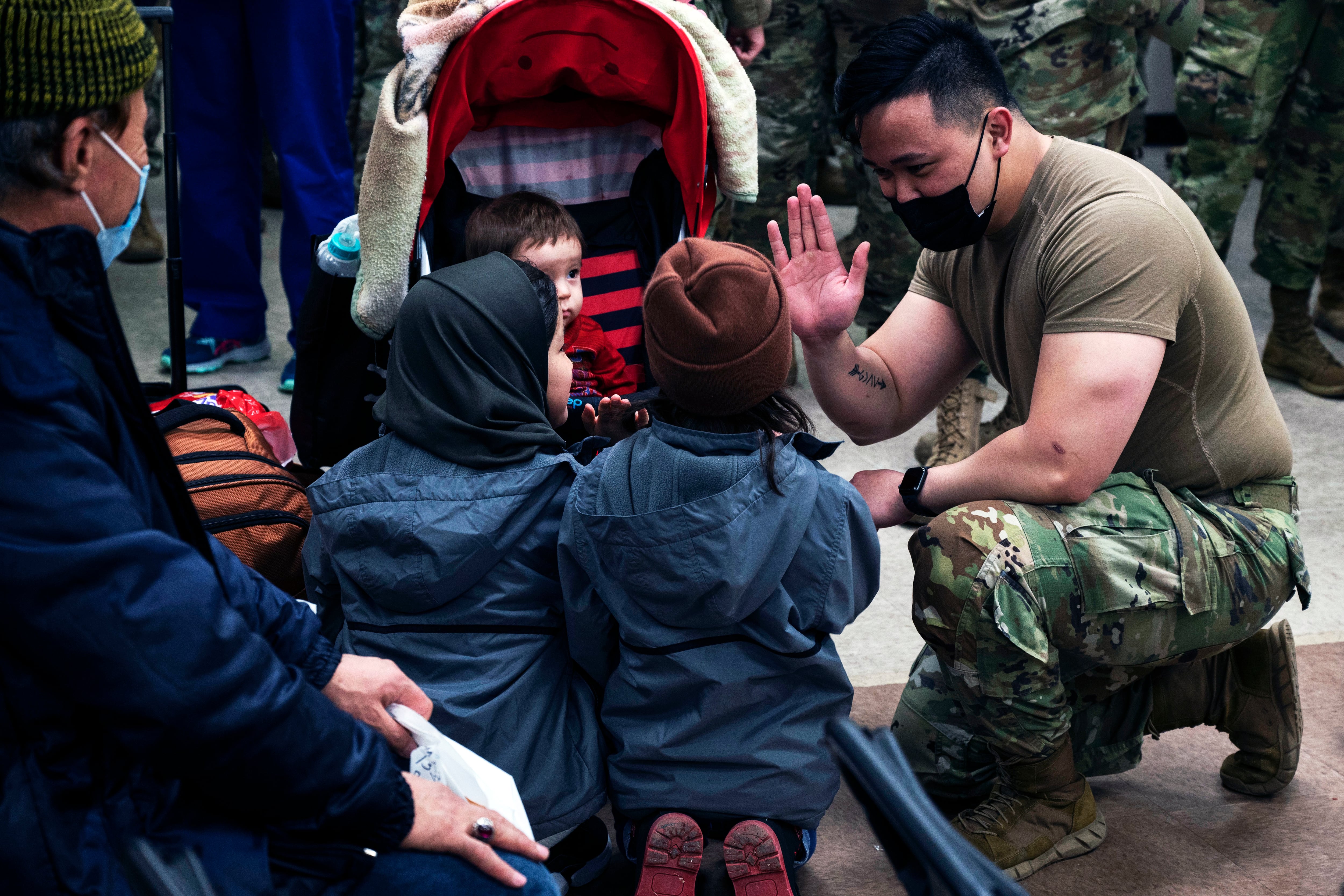The services racked up about $260 million in needed repairs after housing more than 80,000 Afghan refugees at U.S. military bases between summer 2021 and 2022, according to a report released Wednesday by the Defense Department’s inspector general.
The Afghans, airlifted out of Kabul in the final weeks before the U.S. left Afghanistan for good, spent weeks to months on one of 11 installations, where they received housing, medical care and resettlement assistance.
“DoD installations sustained millions of dollars in damages and depleted supplies that affected their normal operations and military readiness,” the report found, later adding, “The DoD should have risk assessment procedures in place to identify and plan for future temporary housing and facility usage operations, such as OAW and OAR, so installations can return to normal operations in a timelier manner.”
RELATED

Initial estimates totaled more than $362 million, but after review, the Pentagon found that some of the requested repairs were outside the allowable scope of reimbursement; for instance, to repair roads at Marine Corps Base Quantico, Virginia, or to repair the air field at Ramstein Air Base, Germany.
“[Numerous] facilities and equipment were overused, damaged, and remained in various degrees of disrepair, resulting in a costly maintenance effort,” according to the report, with the most reported damage coming at Fort McCoy, Wisconsin, which housed nearly 13,000 Afghans at an estimated cost of more than $145 million.
“The majority of the costs in the Fort McCoy estimate come from reported significant damages to the 213 buildings housing Afghan refugees,” the report found. “Fort McCoy reported that all of the barracks needed repairs or replacement of walls, ceilings, floors, doors, bathrooms, plumbing, electrical systems, heating, ventilation, air conditioning systems, and exterior siding.”
However, the facilities at McCoy were originally built during World War II, the IG found, and auditors were concerned that the installation was using the reimbursement opportunity to upgrade facilities long in disrepair.
“Fort McCoy’s reported cost estimate is over three times the reported cost of Fort Pickett and Camp Atterbury combined, while housing only 12,706 Afghan refugees,” the report found. “Due to the high costs of the Fort McCoy estimate, we have concerns over whether the reported damages to the barracks and other structures at Fort McCoy were a result of the OAW mission or were pre‑existing to OAW.”
In the end, $139 million of their request was granted.
Other costs across the services included damaged tents and cots, as well as depleted medical supplies.
The Air Force initially requested $150 million in repairs, reporting that at Joint Base McGuide-Dix-Lakehurst, New Jersey, “guests damaged facility water systems by forcing large items into pipes, causing clogs,” the report found. “Air Force officials stated these clogged water systems were so excessive that the facility managers could not repair the clogs with conventional plumbing tools.”
After review, the estimate dropped down to $57 million.
The IG concluded that the services need better risk assessment procedures for any future efforts, and that the Pentagon should oversee installation repairs to ensure that funds are being used appropriately.
Additionally, the report recommends that DoD “develop policy for future humanitarian aid operations that require DoD installations to perform assessments of buildings that will be used before the housing of Department of State supported operations. ... The assessments will form the basis for restoration reimbursement after the Department of State supported operation is complete.”
The report also requests that the Pentagon’s comptroller come up with a plan to cover the remaining needed repairs at the 11 bases not eligible for reimbursement through humanitarian disaster funding.
Meghann Myers is the Pentagon bureau chief at Military Times. She covers operations, policy, personnel, leadership and other issues affecting service members.




